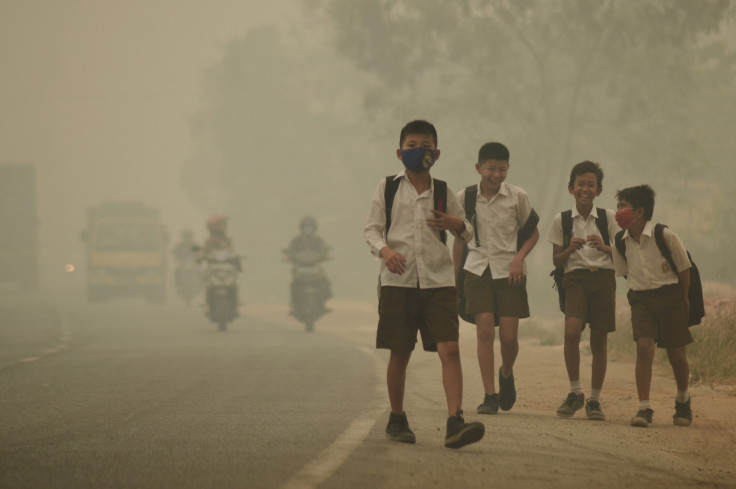Unicef Air Pollution Report: 600,000 Children Under 5 Die From Related Causes

About two billion children — more than a quarter of the world’s population — live in places where outdoor air pollution exceeds the annual limit set by the World Health Organization. Of them, 300 million children live in areas where ultra-fine particulate matter (PM) suspended in the air is at least six times the international guidelines, making the air toxic.
This data is barely the tip of the proverbial iceberg from the 100-page report released Monday by Unicef, the U.N. agency for the welfare of children. Titled “Clear the air for children,” the report talks about “the impact of air pollution on children.”
According to the report, air pollution and diseases related to it killed 600,000 children under the age of 5 years in 2012. It adds that of over a million children who die from pneumonia every year, at least half the cases are directly linked to air pollution.
The report links one of every eight deaths, including adults, around the world in 2012 to air pollution, which amounts to 7 million people dying due to unclean air. But it highlights the increased impact that PM can and does have on children, who are vulnerable to its effects even before they are born.
Pregnant women exposed to PM 2.5 (particulate matter with diameter of less than 2.5 microns, or one-thirtieth the width of human hair) are more likely to lose the fetus early, delivery it preterm or deliver babies with lower birthweight.

Children also breathe twice as fast as adults, taking in more air per unit of body weight. At the same time, their respiratory tracts are more permeable and the airways smaller, increasing the chance of infections and blockages, especially since the immune system is still not fully developed. Some studies have also shown that the tiny PM can cross the blood-brain barrier, damaging brain tissue and impairing cognitive development, the report said. Many of these problems can persist later in life as well.
There was also a clear divide among rich and poor countries when it came to children affected by air pollution, both outdoor and indoor. “Up to 88 percent of all deaths from illnesses associated with outdoor air pollution and over 99 percent of all deaths from illnesses associated with indoor air pollution occur in low- and middle-income countries. Asia currently accounts for the vast bulk of total deaths attributable to air pollution,” the report said.
In the opening remarks to the report, Unicef executive director Anthony Lake said: “Protecting children from air pollution is not only in their best interests; it is also in the best interests of their societies — a benefit realized in reduced health costs … in increased productivity … in a cleaner, safer environment … and thus, in more sustainable development. We can make the air safer for children. And because we can, we must.”
The entire report can be found here. It was released ahead of the upcoming U.N. climate change conference to be held in Morocco from Nov. 7-18.
© Copyright IBTimes 2024. All rights reserved.





















